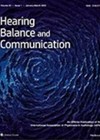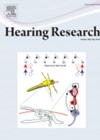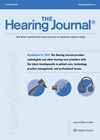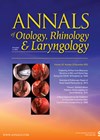
Journal Reviews
Keep on moving
This study compared the differences in localisation of sound between those with symmetrical hearing within normal limits (NH) and those with single-sided deafness (SSD). Unsurprisingly, those with SSD took longer to localise sounds and had a higher error rate. Although...
The cocktail party conundrum
I feel, with slight sadness and disappointment, that a good cocktail party, dresses, punch bowls and all is not currently in its heyday and, therefore, opportunity of attending is slim. However, from what I remember, they tend to be a...
Expectations and practice
Reading this paper is reassuring. It does not appear to be groundbreaking in its results but research can be as useful, if not more so, when it consolidates knowledge and helps unify the research base. This paper focuses on those...
Family-centred early hearing detection and intervention
This mixed-methods study provides important insight into how caregivers in South Africa experience early hearing detection and intervention (EHDI) services. Using both survey data and narrative interviews, the authors explore how well current services reflect the principles of family-centred early...
Not to be mis-underestimated
It is a very rare occurrence to find a paper looking at NF2 and the auditory system. There seems to only be a couple on NF2 prevalence in the population, so this is unsurprising. As far as I can recall...
Current AI audiology knowledge
Artificial intelligence (AI) tools are becoming increasingly popular and can be utilised by patients, healthcare professionals and students. The performance of chatbots can be variable between different AIs and, indeed, different topics. There is no current consensus for the best...
Hearing impairment awareness in primary school teachers
Early intervention of hearing loss is crucial in school-age children to avoid delay in development of communication, cognition, language and social skills. Teachers play a crucial role in identification and support in cases of progressive or late-onset hearing loss. Using...
Supporting parents in improving their child’s hearing device use time
On the topic of supporting parents with improving their child’s hearing device time, The Hearing Journal recommends sharing a video from Hearing First (video provided online by Hear Jour; produced by www.hearingfirst.org) and provides a unique printable resource for parents...
Diagnosis and management of acute sensorineural hearing loss: a Japanese perspective
In this paper, the authors set out the clinical guidelines to standardise diagnosis and treatment of acute sensorineural hearing loss in Japan. They categorised acute sensorineural hearing loss into five disorders: idiopathic sudden sensorineural hearing loss (iSSNHL), acute low-tone sensorineural...
Audiological symptoms in children with 18q deletion
18q deletion is a rare genetic condition that occurs in approximately one in 40,000 live births. Those born with this deletion often are born with a range of symptoms, including developmental delay, facial dysmorphism, autoimmune disorders and hearing loss. The...
Tympanometry with cochlear implants
Multifrequency and multicomponent tympanometry enables evaluation of minute changes in the middle ear system as well as changes in resonant frequency. Change in resonant frequency would indicate a change in the natural characteristics of the middle ear, such as mass...
Newborn sensorineural hearing loss – what is the incidence?
In the last two decades, the introduction of newborn screening for hearing loss has dramatically lowered the average age of newborn hearing loss diagnosis to around two to three months of age. The benefits of early diagnosis are manifold, enabling...














